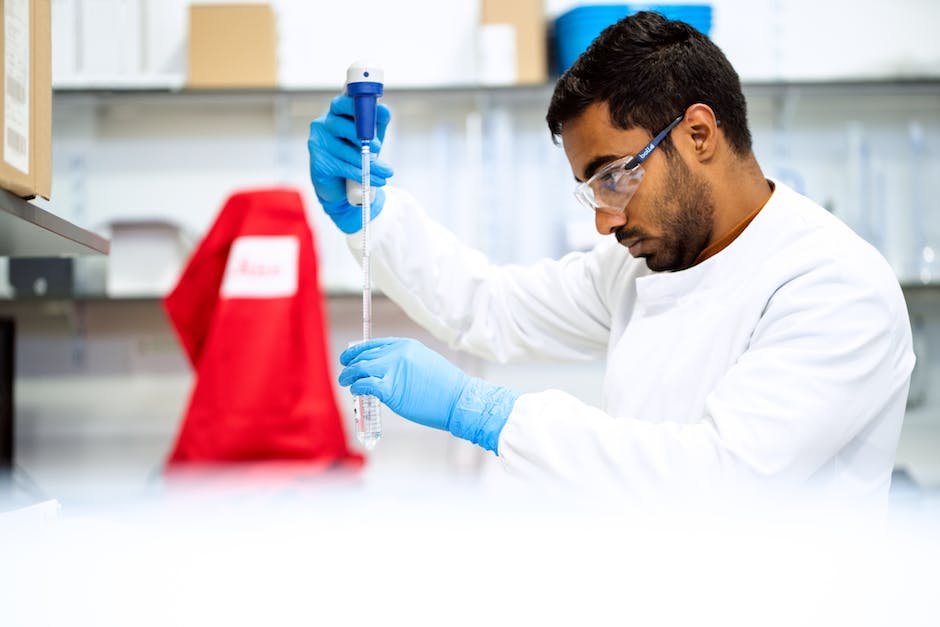What is the importance of experiment in conducting modern research? Why should students engage in experiments more than just descriptive studies? This article discusses the importance, common experimental designs, and the prospects of experiments as a tool to discover new things.
Table of Contents
The pursuit of knowledge and the desire to understand the world around us consistently propels us into a realm of perpetual investigative processes and rigorous scientific examinations. A tool that largely occupies this realm is ‘experimentation.’ The very essence of scientific inquiry, experimentation is a methodological examination with the heart and soul rooted in observation and empirical analysis.
Understanding its nature, significance, methodologies, challenges, and its futuristic perspectives can pave the way for groundbreaking discoveries and advancements in multiple disciplines. Consisting of diverse designs and techniques, each with its particular strengths and applicability, experimental practices serve as the backbone of scientific and academic research – shaping our understanding, informing our decisions, and ultimately, refining the human experience.
The Nature and Importance of Experiment
Scientific experimentation forms the bedrock of empirical enquiry and represents the cornerstone of rigorous research. In the grand tapestry of science, the scientific experiment is not merely a systematic procedure to attest to the validity of a hypothesis or an empirical assertion; it is an integral part of an intricate puzzle, shedding light on the unknown, unveiling exciting new vistas of knowledge, and propelling the vehicle of scientific progress.
Fundamentally, a scientific experiment is the nucleus driving the scientific method. The underlying principle rests on the dialectic of observation, formulation of hypotheses, prediction, testing through experimentation, and analysis. Several noteworthy contributions to scientific knowledge have been produced from this rigorous methodological framework.
Experimentation provides a vital platform for testing hypotheses and theories in a controlled environment, thereby ensuring the reliability and validity of the results. A scientific experiment that is well-conceived and meticulously executed offers a clear snapshot of the cause-and-effect relationships under investigation.
Four Key Attributes of a Scientific Experiment
1. Reproducibility
One of the key attributes of a scientific experiment is its reproducibility. This critical element underscores the importance of credibility and verifiability in science, as reproducibility essentially forms the acid test for the validation of research findings. The beauty of this paradigm lies in its democratizing effect, bridging the gap between independent investigators and established scientific frameworks.
2. Falcifiability
Embedded within scientific experiments is a principle known as falsifiability, posited by the renowned philosopher of science, Sir Karl Popper. Essentially, a theory’s ability to be scientifically tested and potentially disproven determines its scientific legitimacy.
Hence, scientific experiments provide a potent mechanism to bolster or dismantle existing theoretical constructs, driving the forward march of scientific discovery.
3. Ethically sound
Although the role of scientific experiments is unquestionably pivotal, it is equally important to maintain a persistent focus on ethical considerations. Responsible conduct of research promotes trust in the scientific process, ensuring that the pursuit of knowledge is not compromised by institutional shortcuts or personal biases.
4. Has limitations and challenges
Appreciating the centrality of scientific experimentation to the research enterprise also entails acknowledging the inherent limitations and challenges. No single experiment can claim absolute truth; instead, it contributes to building a consensus within the scientific community by either supporting or contesting existing hypotheses.
In sum, the scientific experiment, with its core components of observation, hypothesis testing, reproduction, and falsifiability, represents a vital tool in the researcher’s arsenal, shaping the contours of scientific enquiry and knowledge. It lies at the heart of scientific exploration, fostering an environment of scrutiny and innovation, and continually refining the roadmap to new discoveries and advancements. Thus, the scientific experiment is not merely a mechanism of research; it is, in essence, the embodiment of the scientific pursuit itself.

Experimental Designs and Techniques
Key Experimental Designs and Techniques
The cornerstone of scientific research requires profound comprehension of experimental designs and techniques. Ingeniously constructed, these designs embody the heart of experimental studies, offering invaluable insights, identifying causal inferences, and articulating a slight difference in relationships between variables. Prominent varieties of these designs and techniques include randomized controlled trials (RCTs), quasi-experiments, and single-subject designs, each possessing distinct advantages and attributes.
1. Randomized Controlled Trials
Antithetical to observational research, randomized controlled trials (RCTs) delineate experimental manipulations and allow researchers to infer causality. The hallmark of an RCT is the iteration of random assignment, facilitating comparability between intervention groups and controlling for confounding variables.
This attribute bolsters the propensity that ethereal and usually unmeasurable characteristics are equally distributed across groups, thereby impeding systematic bias. With such irrespective notions, RCTs are coined the gold standard in healthcare research due to their high internal validity.
2. Quasi-Experiments
Closely associated yet inherently distinct, quasi-experiments, are observable in circumstances where random assignment is unrealizable or unethical. Quasi-experiments align identification of causal connections without compromising ethical boundaries.
Though the absence of randomization contributes to potential confounding and lower internal validity, these design’s external validity is often more substantial, grabbing a bigger bite of real-world applicability compared to RCTs.
Thus, they serve as an invaluable concession when RCTs are nonviable or inappropriate.
3. Single-Subject Designs
Venturing towards single-subject designs, they place emphasis on the individual rather than the collective. By reversing the traditional large sample mentality, these designs promote the examination of behavioral changes within a single entity over time.
Robust against inter-individual variability and inherent in their format, they mitigate concerns of small population sizes and are advantageous in preliminary stages of research, improving feasibility and efficiency.
Modifications of the Common Experimental Designs
Each technique buttresses the conceptual skeleton of experimental designs with a distinct perspective. Blinded and double-blinded trials, cross-over designs, and factorial experiments stand as indispensable experimental modifications methodical in their approach.
For instance, blinded trials eliminate bias by concealing treatment assignment from participants, while cross-over designs enable participants to serve as their own controls, enhancing statistical efficacy.
Conversely, factorial experiments generate a comprehensive examination of interactions between treatments, interpreting their combined influence on outcomes. The simultaneous analysis of multiple intervention effects leads to resource optimization, disclosing unexpected findings that might elude classic trial designs.
Together, these experimental designs and techniques act as parastrat mechanisms, steering the research vessel on its pursuit of knowledge and understanding. They allow scientists to dissect intricate phenomena, expose cause-effect relationships, and foster scientific progress.
Challenges in Conducting Experiments and Mitigation Strategies
Now that we have delved into the fundamental importance and role of scientific experiments, systematic design systems, and associated challenges in the scientific realm, let’s further venture into the complexities and difficulties inherent in conducting experiments. Overcoming these challenges can significantly enhance the quality and integrity of research outcomes.

Challenges of Experiments
One issue that predominates stems from confounding variables as mentioned in the previous section. These are variables other than the independent variable that may cause changes in the dependent variable, thereby skewing results. These could range widely – from environmental factors to the psychological state of the subjects.
Mitigation practices
Experimental designs must include rigorous controls to minimize the influence of confounding factors. Such controls could include matching subjects to ensure comparability, random assignment to groups, and introducing a placebo where applicable. The use of strict protocols and standardizations can also help curtail these potential distortions.
The Role of Sample Size
The sample size in a study bears heavily on the statistical power of the experiment, which in turn impacts the reliability of results. A challenge often encountered is in securing a sufficiently large sample that can statistically represent the larger population.
Resource constraints, time pressures, and accessibility limitations can inhibit this. Implementing efficient sampling techniques such as cluster sampling or stratified sampling can be beneficial in obtaining a representative sample. Also crucial is an anticipatory power analysis to determine the appropriate sample size necessary for the study.
Bias
Bias is an insidious element that can significantly undermine the validity of an experiment. There is a potential for researchers to observe what they anticipate or desire to see.
Steps such as blinded designs, where either the participants, the researchers, or both do not know which individuals are in the control or experimental group, can help mitigate bias. Double-blind experimental designs offer an even more rigorous control against bias.
Lack of Randomization
In quasi-experiments and single-subject designs, there are inherent threats to internal validity. Quasi-experiments often lack random assignment, making causal inferences difficult, while single-subject designs may suffer from sequencing effects.
Verifying the consistency of these experimental effects across different conditions and populations can address these challenges. Moreover, methods like counter-balancing and randomization can help control for sequencing and testing effects in single-subject designs.
Although the detailed planning and execution of experiments may seem daunting, tackling these challenges head-on is integral to scientific integrity and progress. Cumulative understanding and meticulous adaptation within constraints can yield highly reliable and valid results, propelling scientific inquiry towards new horizons. Such is the art and science of scientific experimentation.
The Future of Experimentation
The Use of Artificial Intelligence
Projecting the future of experimental research, it’s crucial to appreciate the implications of current technological progress, artificial intelligence, and sophisticated analytical instruments. With rapidly evolving scientific methodologies, the experimental landscape will likely be shaped by novel approaches and technological advancements, interspersed with intriguing possibilities and challenges.
Refinement and Augmentation of Experimental Designs
One pressing focus will be that of refining and augmenting experimental designs for greater precision, and reduced variability. Standardization of protocol specifics, along with automation of routine processes, could immensely boost the reliabilities of experimental procedures and resulting data.
Moreover, these adjustments could catalyze efforts towards enhancing reproducibility and mitigating reproducibility crisis.
Computational Simulations
The future of experimental research could also be shaped heavily by an increasing dependence on computational simulations. These enable testing of hypotheses in simulated environments, offering a remarkable opportunity to conduct rigorous ‘virtual’ experiments that were previously inconceivable due to ethical, logistical, or financial constraints.
Artificial intelligence technologies, such as machine learning techniques, promise immense potential to transform research methodology and experimental design. From data collection to processing and analysis, AI and related techniques can provide insightful, holistic patterns and correlations, swiftly facilitating more complex experimental examinations.
Herein, pivotal will be the design and implementation of AI-guided adaptive experimentation, where the computer algorithm leads the determination of experimental conditions based on real-time data.
Virtual Reality
Advancements in technology will also change the landscape of data visualization. Techniques like immersive virtual reality (VR) and augmented reality (AR) could revolutionize the ways experimental results are visualized, contextualized, and interpreted, driving innovation, and enhancing understanding.
Public Participation
Additionally, the advent and potency of citizen science – public participation in scientific research – has potent implications for the future of experimental research. Amalgamating traditional experimental methodologies with this expansive human resource could result in significant enhancements in data collection and idea generation, all while bolstering public understanding and synergies within science.
Issues Confronting Experimentation
In this rapidly-changing experimental landscape, various challenges also become apparent. Issues of data privacy, cybersecurity, and possible misuse of AI could pose significant hurdles.
Meanwhile, the surge of this ‘big data,’ and efforts towards effective harnessing and distillation of such an enormity of information will require significant attention. These myriad challenges underscore the sagacity of continued discussions around ethical, social, and policy implications of emerging experimental methodologies.
Technological Concerns
In a rapidly evolving world, experimental research stands at an intriguing intersection of tradition and transformation. Undoubtedly, these anticipated shifts and emerging technologies will shape experimental research’s role in the vanguard of discovery, thus retaining and augmenting its glory in driving the collective pursuit of knowledge and human advancement. The future is eagerly anticipated, one where hope and potential glisten brightly in the corridors of scientific exploration.
Navigating through the colossal maze that is experimentation can be daunting. Still, it is essential for unlocking the doors to understanding our complex world.
Amid the continuous evolution of experimental methods, propelled by modern and emerging trends such as artificial intelligence, virtual reality, and big data, the future, indeed, holds immense potential for transformational discoveries. Yet, it is crucial to remember that the purpose of experimentation remains the same: ascertaining truth, enhancing understanding, and contributing to the common good.
Understanding this, alongside the challenges and mitigation strategies, equips one with a well-rounded perspective, paving the way for novel thought processes and innovative solutions. Here, we have journeyed through the science and art of experimentation but let this be only a catalyst spurring us into the future of perpetual understanding and progressive discovery.



